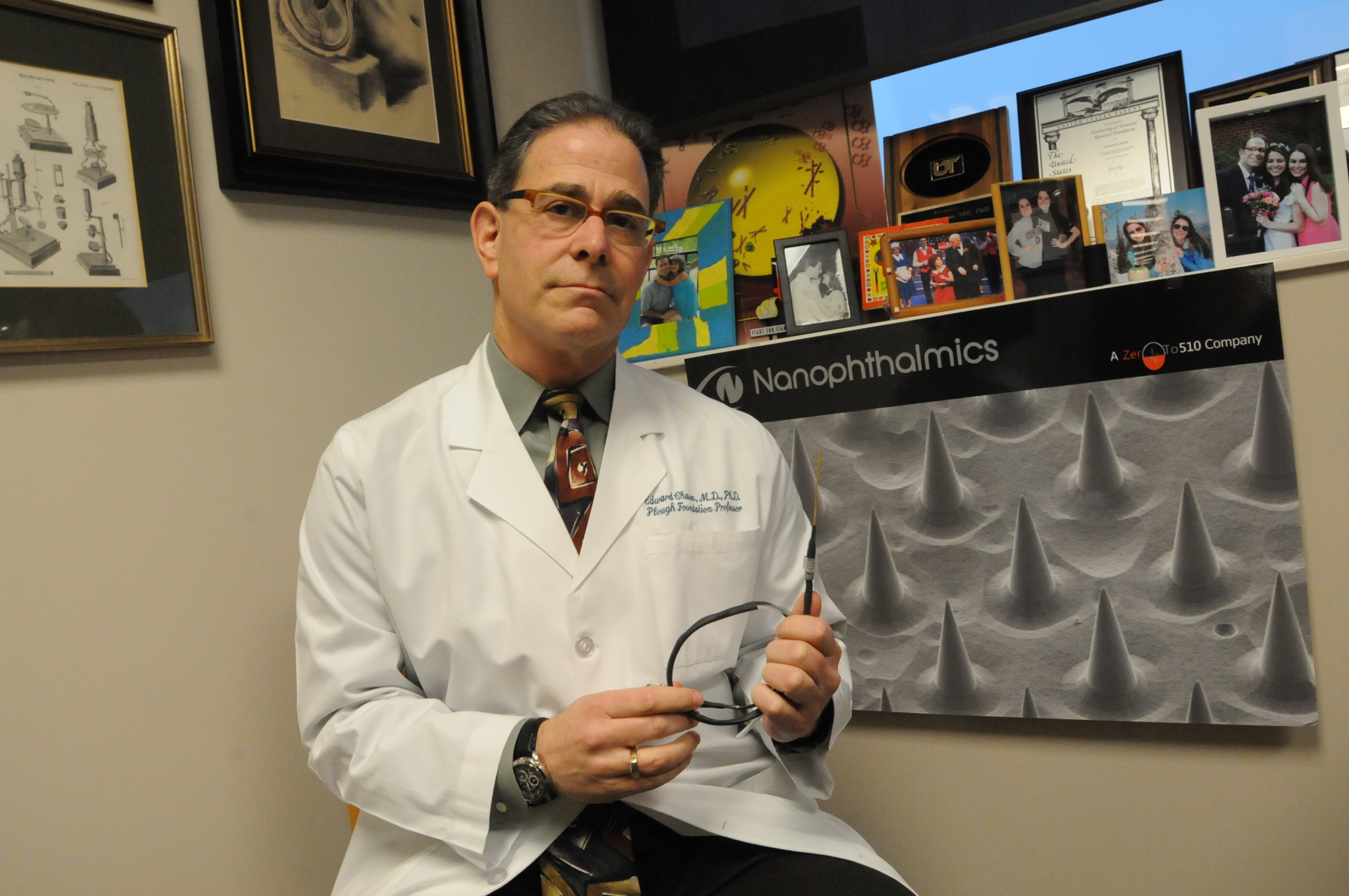
Edward Chaum, MD, PhD, Plough Foundation Professor of Retinal Diseases at the University of Tennessee Health Science Center (UTHSC), Hamilton Eye Institute, has a successful history of collaborating with scientists at Oak Ridge National Laboratory (ORNL) to battle diseases of the eye.
So when he was approached about working together to apply technology being developed at ORNL to his ophthalmologic research, he jumped at the opportunity.
Dr. Chaum and his ORNL collaborator, Pat Collier, PhD, a research scientist, have been awarded a $2.4 million grant from the National Eye Institute of the National Institutes of Health to fund research into the cellular changes in the eye that cause age-related macular degeneration (AMD). Drs. Chaum and Collier are named as co-principal investigators on the project titled, “Nanoplatform and Modeling of the Subretinal and RPE Microenvironment in AMD.” The initial award was $649,226, and the total amount of the grant will be distributed over a four-year period.
AMD causes deterioration of the macula, the portion of the retina that regulates sharp, central vision. “Macular degeneration is the most common cause of vision loss in patients over the age of 65,” Dr. Chaum said. “It’s an enormously important public health problem.”
Dr. Collier and his colleague, Scott Retterer, PhD, also a research scientist at ORNL, have been working on technology called a “nanoplatform” that allows researchers to examine gene expression in individual cells in very small volumes of fluid at a high resolution.
“Pat reached out to me about a year ago and introduced me to some of the work that they were doing and asked me to help them direct the development of that platform for applications in clinical and biological research,” Dr. Chaum said. “And so together, we took that platform concept and applied it to the problem of macular degeneration, and are now using that technology to better understand how and why the disease progresses.” The research will be conducted in laboratories at UTHSC and at ORNL.
With this technology, Drs. Chaum and Collier will be able to study the retinal pigment epithelial cells that are affected by macular degeneration, as well as the environment and conditions around the cells that result in the disease.
“A number of things happen as that cell type ages in the eye, and this platform will allow us to understand how that type of cell responds to age and how it responds to environmental stressors,” Dr. Chaum said. “It will also help us to understand the genetic responses to those aging changes and how those molecular responses lead to macular degeneration.”
A better understanding of these factors may help to develop better treatments for macular degeneration, Dr. Chaum said. “It may help us to understand why the treatments we have work, but sometimes only work in a limited way,” he said. “And it may help us to understand better ways to prevent the development of the disease.”
The National Eye Institute, part of the National Institutes of Health, is dedicated to research, training, education and programs related to blinding eye diseases.
Oak Ridge National Laboratory is the largest science and energy laboratory managed by the U.S. Department of Energy. It houses basic and applied research spanning a broad range of scientific and engineering disciplines.
[efsflexvideo type=”youtube” url=”https://www.youtube.com/watch?v=nxEZJIJKHs0&feature=youtu.be” allowfullscreen=”yes” widescreen=”yes” width=”420″ height=”315″/]
